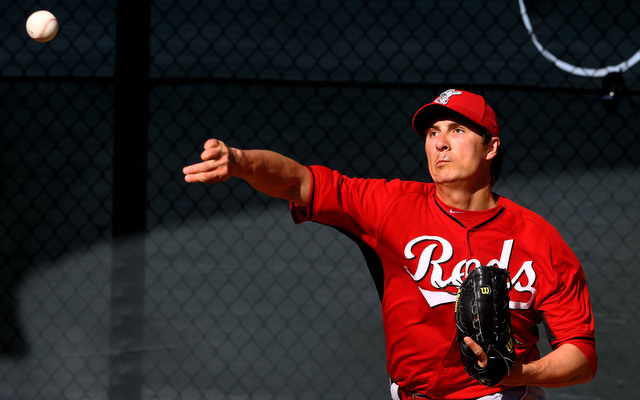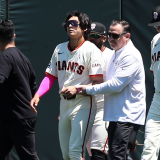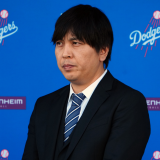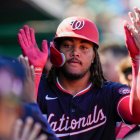
MORE: Reds, Bailey agree to six-year, $105 million contract
The 2014-15 free agent pitching class got a little bit thinner on Wednesday morning. The Reds and right-hander Homer Bailey avoided arbitration by agreeing to a six-year contract extension worth $105 million, a deal that keeps Bailey off the free agent market next winter and in Cincinnati through his age 33 season.
On the surface, $105 million is rather pricey for a pitcher with a career 49-45 record and a 4.25 ERA (96 ERA+). Wandy Rodriguez had a 62-64 record with a 4.18 ERA (101 ERA+) when he signed his three-year, $34 million extension with the Astros a few years ago, one year before he was supposed to hit the open market. Is there really a $71 million difference between these two pitchers? Well, yes. There is.
Bailey, who turns 28 in May, has improved every season since joining the Reds' rotation full-time in the second half of 2009. Most notably, he's allowed fewer runs and fewer base-runners in each passing season while throwing more and more innings. Here, look:
| 2009-13 Homer Bailey Improvement: Basic Stats | |||
| Year | Innings | ERA | WHIP |
| 2009 | 113 1/3 | 4.53 | 1.47 |
| 2010 | 109 | 4.46 | 1.37 |
| 2011 | 132 | 4.43 | 1.28 |
| 2012 | 208 | 3.68 | 1.24 |
| 2013 | 209 | 3.49 | 1.12 |
The big jump came from 2011 to 2012, but that's very good overall. Bailey has steadily improved as he gained experience and entered what should be the peak years of his career, the late 20s and early 30s.
It's unlikely, however, the Reds decided to hand young Mr. Bailey a nine-figure contract on the strength of improving ERA and WHIP numbers. GM Walt Jocketty has been in baseball a long time, and he's won two World Series rings and thrice been named Executive of the Year because he knows there is more to life than superficial stats like ERA and WHIP.
The Reds signed Bailey to this huge contract because of the improvement he's made in what I guess we should call his underlying performance. The things he can control, not the things his teammates and fielders will affect, like ERA and WHIP. Here is where Bailey has really improved in recent years:
| 2009-13 Homer Bailey Improvement: Underlying Performance | |||||
| Year | Strikeout Rate | Walk Rate | Ground Ball Rate | Swing & Miss Rate | Swing & Miss Rate in Zone |
| 2011 | 18.9% | 5.9% | 39.5% | 9.3% | 10.5% |
| 2012 | 19.2% | 6.0% | 44.9% | 9.4% | 11.1% |
| 2013 | 23.4% | 6.4% | 46.1% | 10.7% | 12.8% |
Over the last three seasons, Bailey has improved both his strikeout and ground ball rates considerably while his walk rate remained relatively unchanged. Furthermore, batters are simply swinging and missing at his pitches more often, including when they are in the strike zone. That ability to get hitters to swing through a pitch in the zone is a separator between good pitchers and great pitchers. The guys who can do it consistently tend to have a lot of success.
The Reds didn't pay Bailey because they like that his ERA and WHIP are heading, they paid him because he's shown considerable improvement in the things that make pitchers successful: get strikeouts, get swings and misses, get ground balls and limit walks. That's the blueprint for success right there. Do those things and you'll be just fine, and Bailey is doing them more and more with each passing season.
Given his age, it's not unreasonable to think Bailey will continue to improve in these areas even more. But, even if he doesn't, the pitcher he was in 2012 and 2013 is worth $100 million from age 28-33, especially in today's market. Every long-term deal carries risk, especially when it comes to pitchers, but the Reds paid Bailey not for the pitcher he was these last few years, but for the pitcher he is poised to become in 2014 and beyond.





















